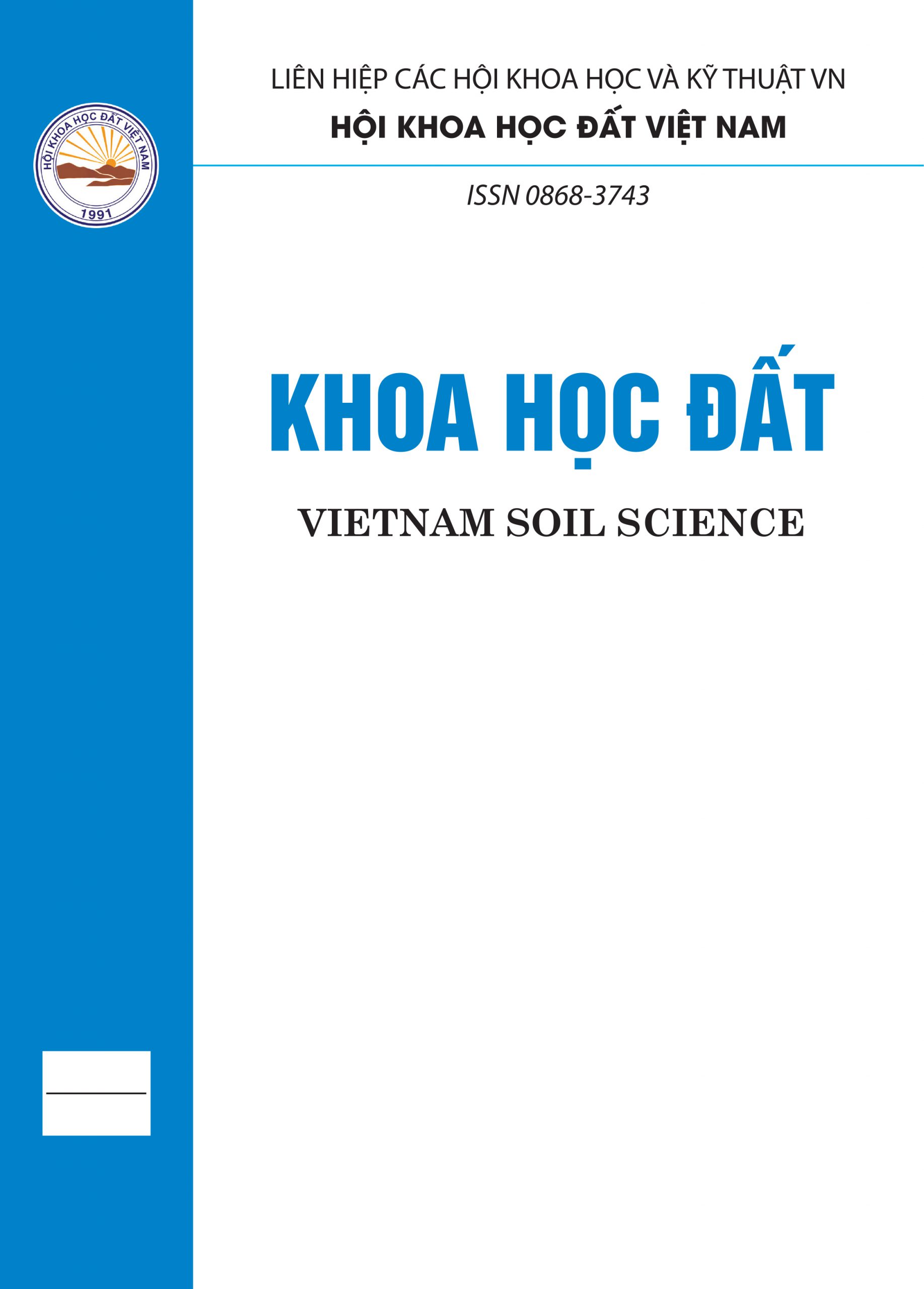NGHIÊN CỨU NHIỄM BẨN VI KHUẨN TRÊN RAU MUỐNG (Ipomoea aquatica) VÀ TRONG ĐẤT KHI TƯỚI BẰNG NƯỚC SÔNG VÀ NƯỚC THẢI BIOGAS
Kim Lavane1*, Nguyễn Trường Thành1, Trần Hoàng Phúc2, Lâm Thị Phương Thảo3
[1]Khoa Môi trường và Tài nguyên thiên nhiên, Trường Đại học Cần Thơ2Học viên cao học, Khoa Môi trường và Tài nguyên thiên nhiên, Trường Đại học Cần Thơ
3Ủy ban Nhân dân phường 1, thành phố Sóc Trăng, tỉnh Sóc Trăng
*E-mail: klavane@ctu.edu.vn; ĐT: 038 3334 026
TÓM TẮT
Nghiên cứu này nhằm đánh giá sự tích tụ và lưu tồn của vi khuẩn trên rau và trong đất khi được tưới bằng nguồn nước thải biogas và nước sông nhiễm Coliforms. Rau được trồng trong thùng xốp có kích thước 0,7 m x 0,5 m x 0,6 m với hai nghiệm thức nước tưới gồm nước thải biogas (NT) và nước sông (NS). Mẫu rau được thu từ ngày thứ 15 với cách khoảng 4 ngày. Từ ngày thứ 31, rau không được tưới nước nhằm đánh giá khả năng sống sót của vi khuẩn. Kết quả cho thấy mật số tổng Coliforms và E. coli trên rau muống tích tụ tăng dần theo thời gian. Mật số tổng Coliforms và E. coli trên rau được tưới bằng NT ở ngày thứ 31 lần lượt là 1,2 x 108 MPN/g và 2,1 x 104 MPN/g, tăng 22,7 – 26 lần so với mẫu thu ngày thứ 15. Đối với rau tưới nước sông thì mật số tổng Coliforms và E. coli lần lượt là 27 x 104 MPN/g và 1,7 x 103 MPN/g. Vi khuẩn vẫn còn được phát hiện trên rau sau 12 ngày ngưng tưới nước. Trong môi trường đất, tổng Coliforms và E. coli tăng cao sau kết thúc thí nghiệm đối với nghiệm thức NT và NS. Như vậy, rau sẽ nhiễm vi sinh và có thể gây ảnh hưởng đến sức khỏe nếu nguồn nước tưới có chất lượng không phù hợp.
Từ khóa: vi khuẩn, rau muống, nước thải, túi ủ biogas, nước sông.
SUMMARY
Studying bacterial contamination on Ipomoea aquatica and soil irrigated by river water and biogas effluent
Kim Lavane1, Nguyen Truong Thanh1, Tran Hoang Phuc2, Lam Thi Phuong Thao3
1College of Environment and Natural Resources, Can Tho University
2Master student, College of Environment and Natural Resources, Can Tho University
3Ward 1 People’s Committee, Soc Trang City, Soc Trang Province
This study aims to evaluate the accumulation and survival rate of bacteria on vegetables and soil irrigated by fecal coliform contaminated biogas effluent and river water. Vegetables are planted in foam containers with a size of 0.7 m x 0.5 m x 0.6 m (LxWxH) with two irrigating treatments including biogas effluent (NT) and river water (NS). The vegetable was sampled from the 15th day with a period of 4 days. From the 31st day, the vegetable was not watered to assess the viability of bacteria. The results showed that the total numbers of Coliforms and E. coli on Ipomoea aquatica gradually increased over time. The total Coliforms and E. coli on vegetables irrigated with NT on day 31st were 21 x 106 MPN/g and 9.2 x 104 MPN/g, respectively, an increase of 22.7 – 26.0 times compared to the sample collected on day 15th. For river irrigated vegetables, the total Coliforms and E. coli in the soil were 27 x 104 MPN/g and 1.7 x 103 MPN/g, respectively. Bacteria are still detected on vegetables after 12 days of stopping watering. In the soil environment, the total Coliforms and E. coli increased much at the end of the experiment for NT and NS treatments. Thus, vegetables will be contaminated with microorganisms and can affect health if the quality of irrigation water sources is inappropriate.
Keywords: bacteria, biogas effluent, Ipomoea aquatica, river water.
Ngày nhận bài: 25/3/2025
Ngày thông qua phản biện: 24/5/2025
Ngày duyệt đăng: 12/6/2025
 Tạp chí
Tạp chí




